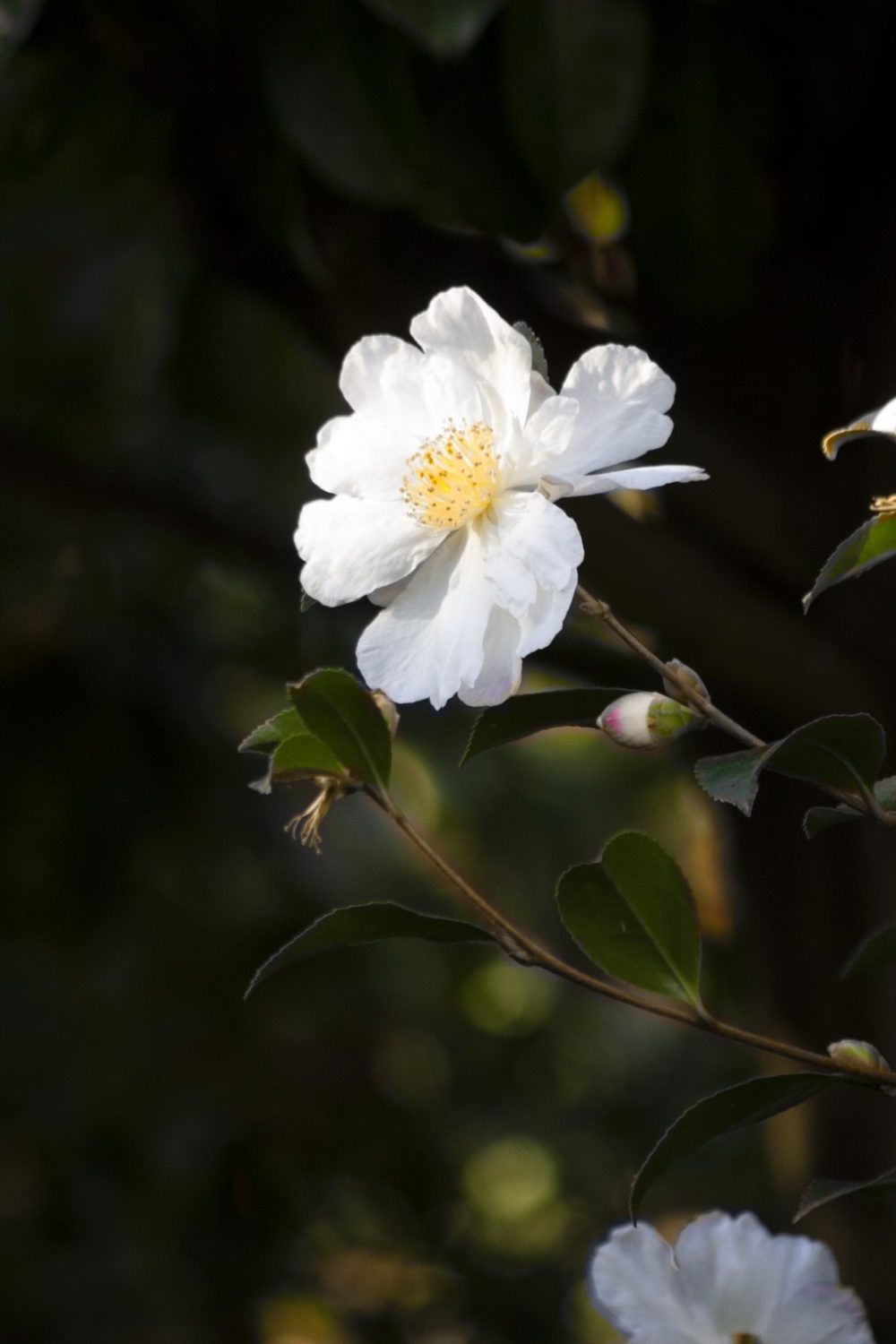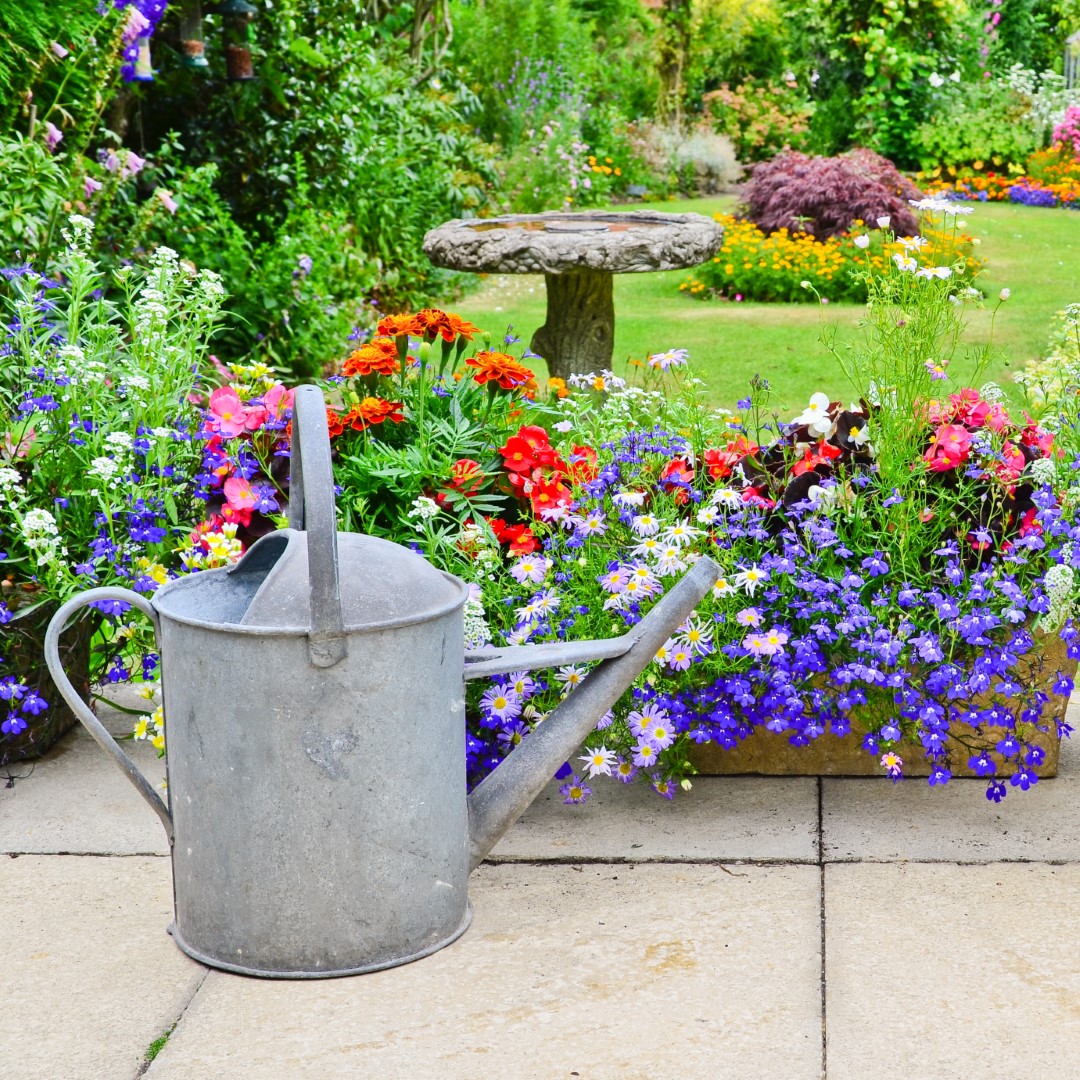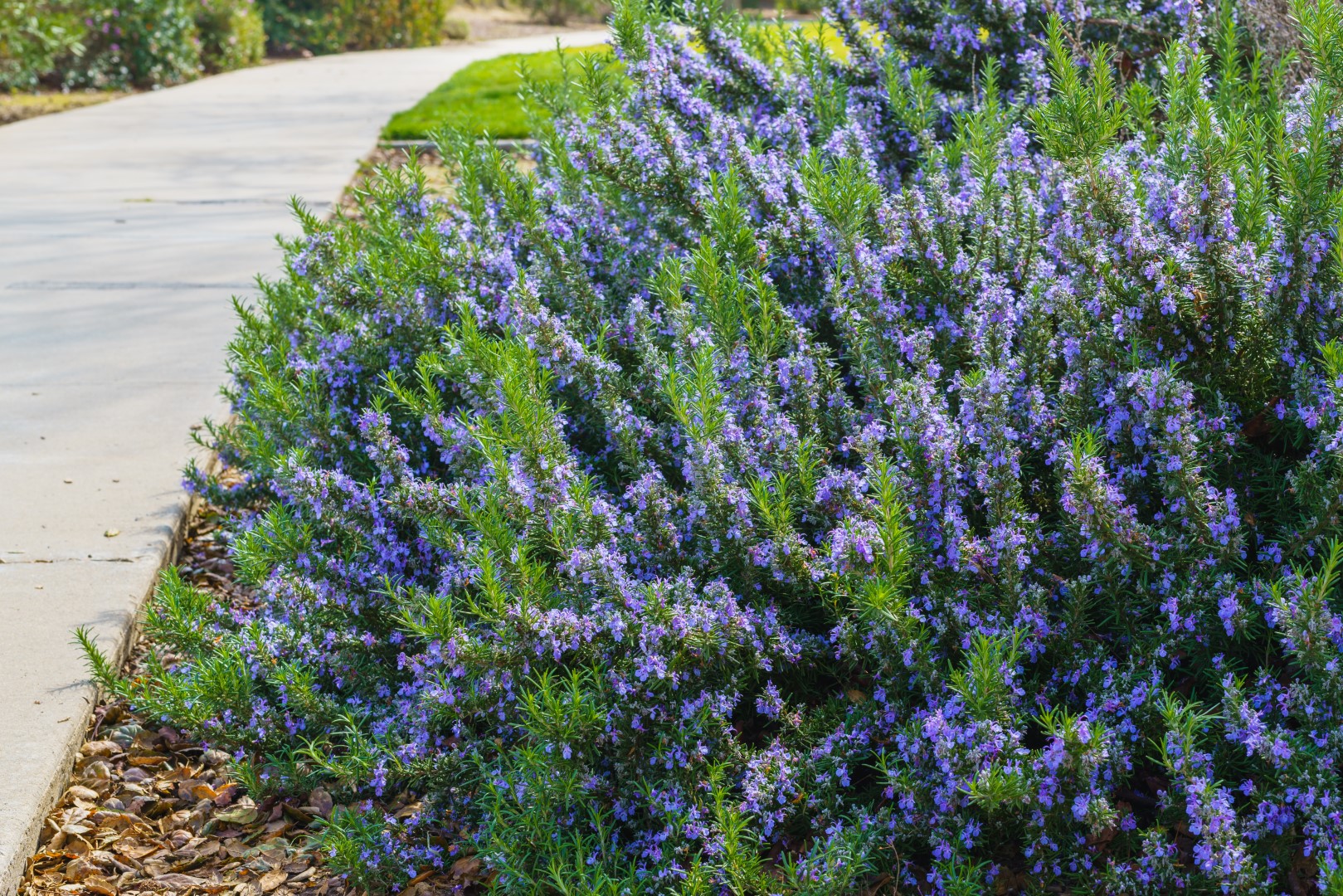Jo Arnell comes up with some practical solutions to help protect your plants during challenging periods of weather
Many of the Mediterranean species – lavender, rosemary etc – can withstand the cold, but not prolonged periods of wet weather. This is why they are hard to grow in clay soil. Clay holds onto water and is very slow to dry out and warm up in the spring.
It’s been a tough year. Where the plants are concerned, it’s been a monumentally difficult one. The weather has been, putting it kindly, challenging. This time last year it was raining, and it didn’t stop raining until the beginning of December – when it froze. Many of our tender shrubs – things like hebes and pittosporums – died. The weather didn’t really start warming up until late spring and then suddenly it went very hot and dry. Long periods of extreme weather – which is more the norm now – make growing conditions difficult for all the plants. Some will cope better than others – the weeds for example, have barely noticed and are still romping away – but many of our cultivated, carefully nurtured plants are suffering.
We need to find ways to help the garden in tricky times, ways to keep our plants alive, or, if we do end up losing them, an understanding of why they have died. The reason that our native and wild plants seem on the whole to manage much better than most is because they are ideally suited to their environment and able to withstand some of the effects of climate change – in the short term. Those from other places and the cultivated versions of them, where the soil and atmospheric conditions are very different, are only just at home here, so prolonged changes in the weather can be the final straw.

Most soils are neutral, but if you have acidic soil you’ll be able to grow plants like camellias
Soil matters
Your soil is going to go a long way to keep your plants healthy – or not, depending on several factors. It’s worth doing a soil test to find out the pH. Most soils are neutral, but if you have acidic soil you’ll be able to grow plants like camellias and azaleas. If it is alkaline, then lilac, lavender and vegetables like cabbage and Brussels sprouts will do well.
The structure of the soil is important too. If yours is heavy clay, it may be waterlogged in winter and hard as concrete in summer. Sandy soils on the other hand are free draining – which means that they are very dry in summer and tend to be low in nutrients. Improve heavy clay by adding organic matter – manure or compost. Improve sandy soil by adding the same thing – organic matter will break up a clay soil and make it more free draining, and will help a sandy soil to hold onto moisture and nutrients.
Good drainage is important, especially through long periods of wet, cold weather. Many plants more suited to Mediterranean conditions suffer in a wet winter because the area around their roots is saturated. This is often worse than the cold.
Read my leaves
You can tell a lot about a plant from its leaves. The size, texture and colour of the leaf will indicate the sort of conditions it has adapted to. Big floppy leaves with a large surface area – think jungle and pond side plants – are trying to get rid of excess water, whereas those with thin, needle-like leaves are trying to hold onto water. In fact, in the case of desert plants, the leaves have become spikes. Tough, leathery leaves, or a waxy coating will prevent water loss. Hairy or woolly leaves are also adaptations to arid conditions.
Dark leaves absorb more light than pale, so the deep green leaves of a holly, or a camellia are ideally suited to shade. Pale, silvery or grey leaves, on the other hand, reflect light well, so won’t be overwhelmed in harsh sunlight.
The root of it
The rhizosphere is the area directly around the roots of the plant, a root ‘microbiome’ made up of bacteria, fungi and other micro-organisms, spores, seeds and larval stages of tiny insects. It is the interaction of the biota within the rhizosphere – a bit like in our gut microbiome – that determines plant health. Plants form symbiotic relationships with soil bacteria and fungi that enable them to access nutrients, survive attack by pests and withstand periods of difficult weather.
Pots are very prone to drying out, especially little ones, so try to plant up groups of plants in larger containers, or position small pots near to one another
Drought
Long periods with no rain are a disaster for plants that need moisture. We can help them by mulching at the end of the winter while the soil (in theory) is still damp. Mulching will help the soil hold onto moisture, suppress competitive weeds and improve the structure – feeding the soil ecosystem and encouraging the microbes that will come to the aid of plants.
If there isn’t a hosepipe ban then water, but water carefully. Well established plants should be able to cope without regular watering, but anything planted in the last two years – especially woody plants –will need some help. Water plants deeply, rather than sprinkling them every night. It is better to water once a week, but to make sure the water gets to the roots. Light watering will evaporate before the plant can use it, or encourage the roots of the plant to stay near the surface of the soil. Watering at night is probably best, but remember that slugs and snails come out at night and will really enjoy the cool damp conditions. Watering very early in the morning is the alternative – in the middle of the day most of your hard work will evaporate.
Pots are very prone to drying out, especially little ones, so try to plant up groups of plants in larger containers, or position small pots near to one another. Place a saucer underneath to act as a reservoir – but remember to remove this in the autumn to stop the plants’ roots wallowing in water through the winter.
It pays to install water butts – rain water is better for plants and will make all the difference, especially if there is a hosepipe ban. In that situation using grey water – from the bath or your washing up bowl – will be fine too.

Storms and high winds
Wind can be hugely destructive, pulling down power lines, fences and uprooting trees. Protecting plants in these extreme conditions is nigh on impossible, but there are precautions that can be taken to provide some shelter. Semi-permeable barriers, for instance, are better than solid ones, as these will slow down the wind, whereas a solid fence or wall will cause the wind to go up and over, causing it to whip down the other side, or channel along and cause havoc. A very fierce wind will just blow the fence down. Hedges work well to help prevent wind damage, because the wind filters through this living windbreak.
Choose a good, robust hedge if it is to act as a shelter belt – laurel, elaeagnus, hawthorn and hornbeam are good in exposed situations. Remember to leave a gap between the hedge and the flowerbed to enable access for pruning and to keep the roots of the hedge away from the plants, as they will also be competing for moisture.
Winter weather
Our winters are generally mild, but every few years Arctic blasts and Beasts from the East come swooping in, bringing snow and hard frosts, killing the tender plants that normally just about make it through an average winter. Last year hebes and pittosporums were badly affected. Larger leaved salvias like amistad were killed too, although some of these did a good job of playing dead until May, then suddenly springing back to life – possibly once they were already on the compost heap.
Plants native to the northern hemisphere tend to lose their leaves in the winter and go into a state of dormancy. Getting plants through extreme cold, when they have no adaptations to it, is a challenge. Fleece may help to keep off air frosts, mulching with organic matter – like laying a warm duvet over the ground – will provide some protection for dahlia tubers and other tender roots. If you have a greenhouse that can be kept frost-free, or even a porch or cool utility room, you’ll be able to overwinter those in pots, or cuttings of plants grown in the garden.
Many of the Mediterranean species – lavender, rosemary etc – can withstand the cold, but not prolonged periods of wet weather. This is why they are hard to grow in clay soil. Clay holds onto water and is very slow to dry out and warm up in the spring. Plants like lavender need free-draining, or shallow, chalky soil, so may well be better grown in a container – one lifted onto feet, or up on bricks to stop it from sitting in a puddle.
Good preparation is the key. It may well be mild this year, but who knows. One thing is sure – winter is coming.
Join Jo in her garden in Woodchurch, Kent, for gardening classes and workshops. Find out more and book at hornbrookmanor.co.uk.
You may also like
In the Night Garden
Jo Arnell explains how to make the most of your outdoor space once darkness falls Some enchanted evening you may see me outside – mainly searching for slugs in the garden, because the cool hours of night are when they...
Contain your excitement
Jen Stuart-Smith discusses how to get creative with your pots and planters My love affair with plants started with houseplants when I was a child. As my bedroom windowsill overflowed – resulting, occasionally, in waking up with compost under my...
More than just a pretty face
Jen Stuart-Smith explores the multiple uses of some easy-to-grow garden favourites When you grow flowers for their beauty, shape and colour it can be easy to forget all the other qualities they have to offer. Some are edible, others provide...










